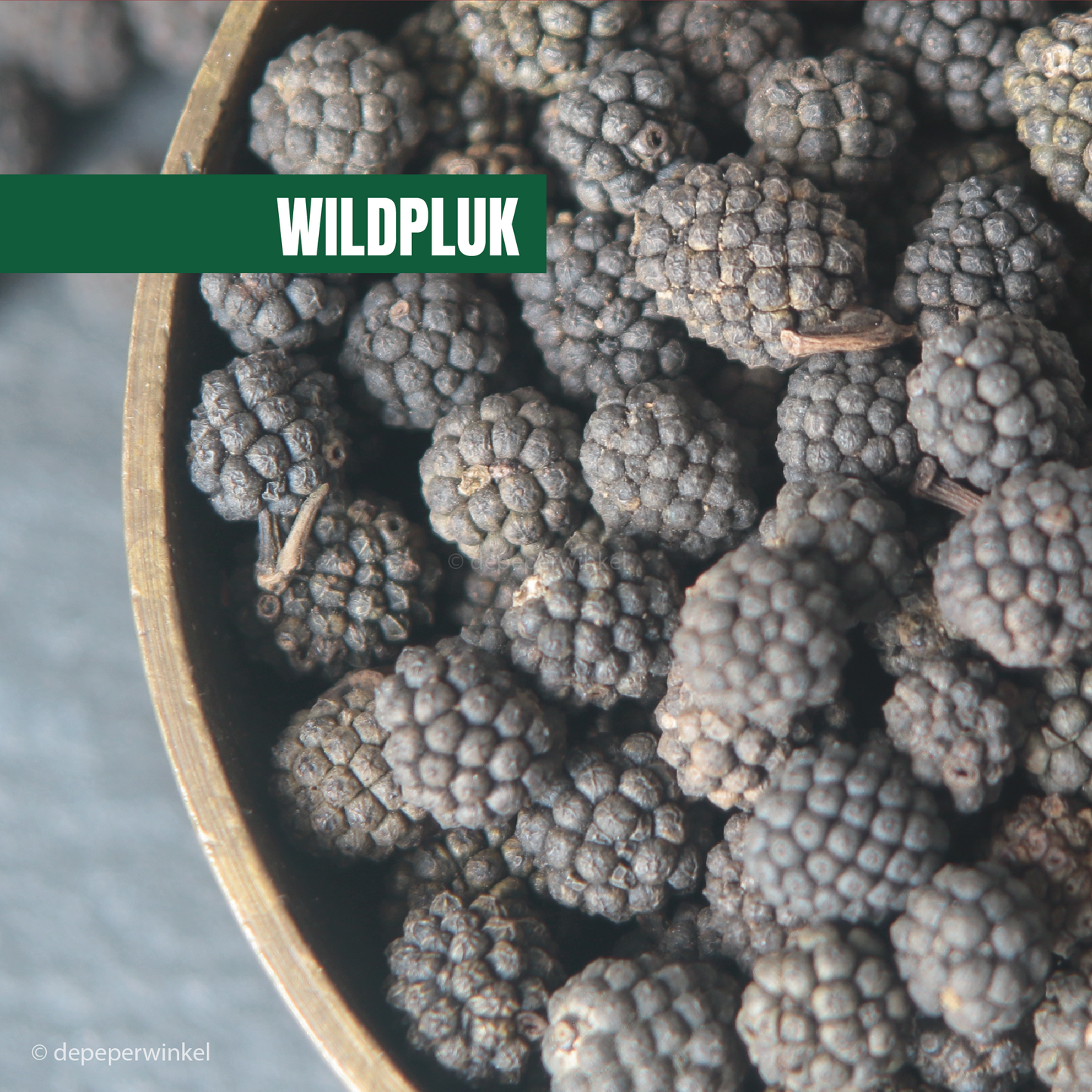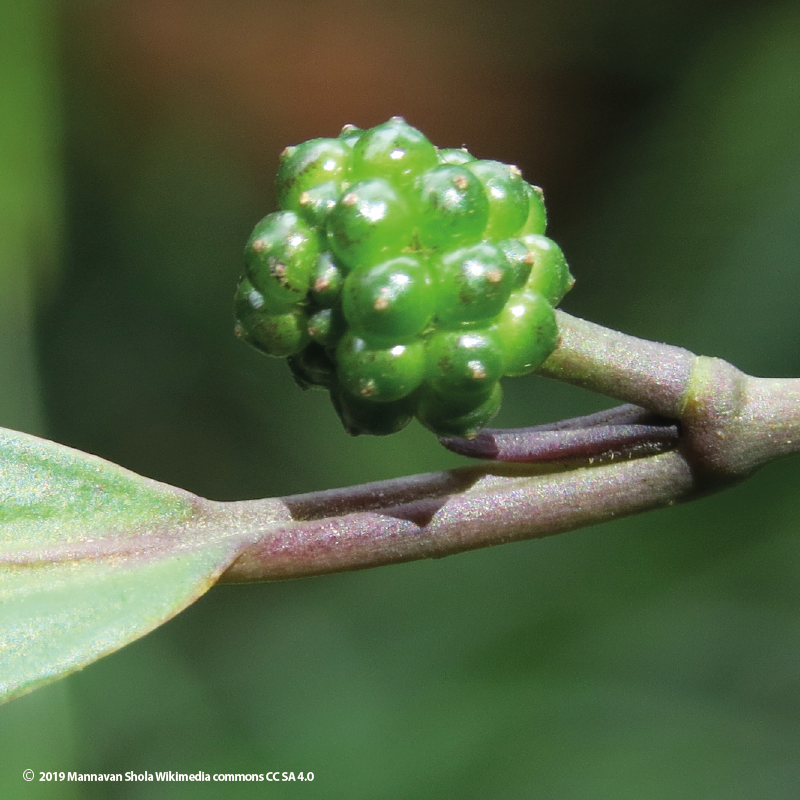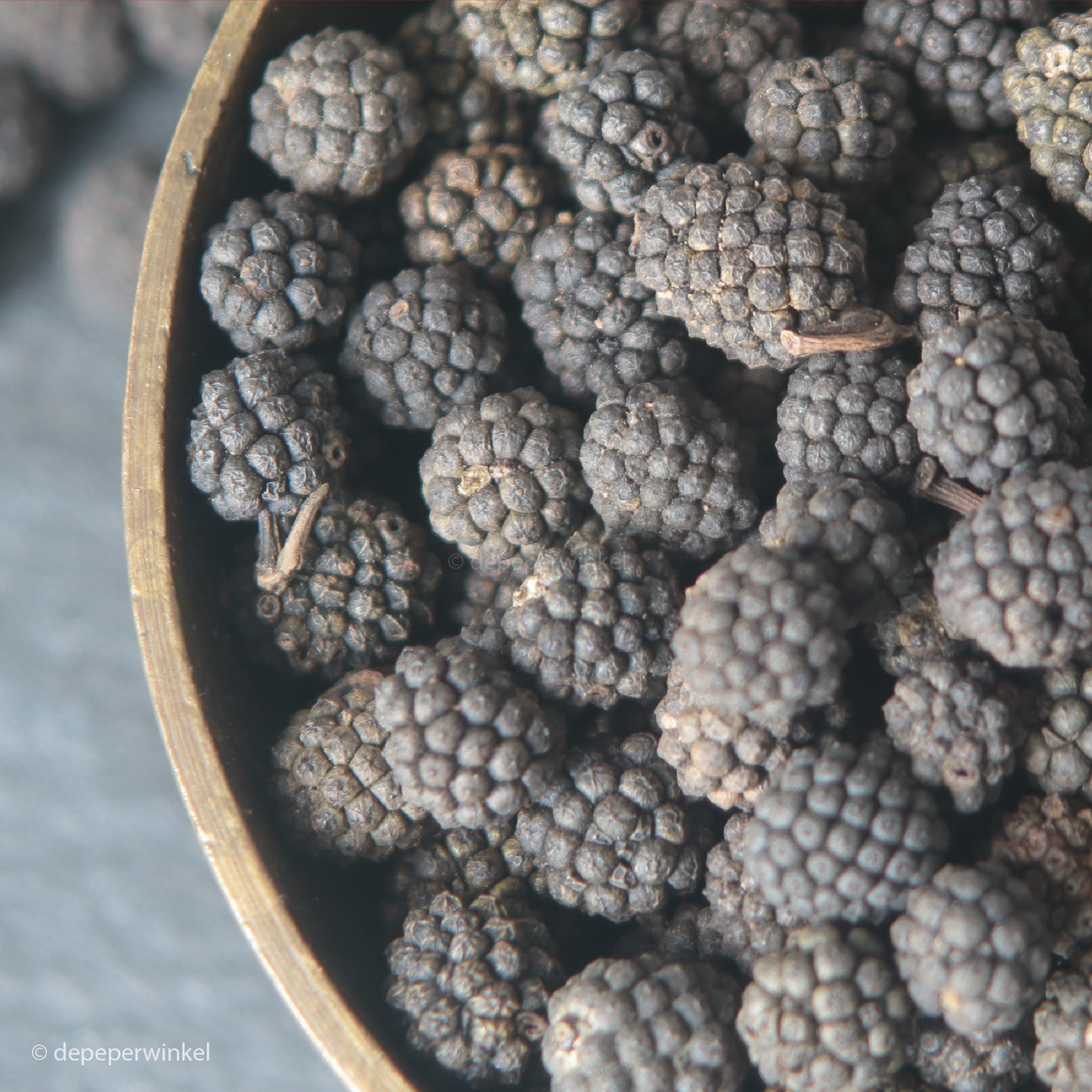depeperwinkel
Assam long pepper
Assam long pepper
In stock
Unable to load availability for pickup
The Piper mullesua is a fairly rare Asian pepper species. Although it is found in many countries in the Himalayas, in the west only the one from Assam is available, a region characterized by mountains and plateaus.
The Assam pepper only grows in the wild, often on steep and rocky slopes. In English it is therefore called hill pepper. It is not cultivated. The Piper mullesua is called a long pepper, because like long pepper it has a fruit that is made up of many fused ovary, like a blackberry. The difference with the classic ear-shaped long pepper is, apart from the shape of the fruit, the size of those fruits. In the long peppers these are as big as poppy seeds, in the Assam pepper comparable to grains of paradise.
This pepper grows on a vine that is about four meters high, with slightly hairy branches and lanceolate leaves. The inflorescence is hermaphroditic. The flowering period in the Himalayas is from May to July, but on the west coast of India it flowers considerably earlier, from January to April. The fruit is barely a centimeter in size and stands on a stalk.
The pungent substance in real peppers is piperine, the trademark of the real peppers in the plant genus Piperaceae. This piperine is almost absent in this pepper. Instead, this pepper has a slightly numbing, tingling sensation on the tongue, as you would expect from a Szechuan pepper. Very unusual for a real pepper.
Not only the sharpness, but also the aromas develop during the maturation. The most important taste components of this ripe 'slope pepper' are:
- E-β-farnesene (22.8%), sweet, woody with citrus notes,
- myristicin (19.2%), warm spicy, like balsamic, in cinnamon, nutmeg and black pepper,
- germacrene D (11.8%), spicy and woody,
- β-caryophyllene (4.9%), sweet spicy and woody,
- α-copaene (2.6%), woody, spicy, honey,
- Z-β-farnesene (2.6%), 'green' with citrus notes, and
- d-limonene (1.4%), responsible for the citrus aromas.
This subtle pepper fits perfectly into the character of Assamese cooking, in which spices are used only in moderation. Famous are the dishes with river fish, often from their own pond, such as sour fish, masor tenga. Tip: Instead of frying the fish, cook it in a mixture of ginger and assam pepper.
This special long pepper is also excellent to use in dishes in which other long peppers can be used, such as in oso buco, with goat cheese and in winter soups. Due to the fruity accents, the pepper combines well with exotic fruit, coconut, but also strawberries and melon.
Recipes):

Features:
- 100% pepper berries from the Piper mullesua
- grows in the wild, hand picked
- Origin: Assam, Northeast India
Assortment
- available in glass and stand-up pouch (no test tubes)
- glass jars contain 45 or 60 grams
- stand-up pouches with a capacity of up to 30 to 300 grams
- larger quantities on request
Gift wrapping
- The jar is available in a tasteful gift packaging, consisting of a cube box filled with black tissue paper
- For an overview of our gift packaging, please refer to the section gift wrapping
General advice
- crush the fruits and grind the peppercorns shortly before use
- the taste is very subtle, so add the ground pepper to your preparation at the very last moment, or give it time to incorporate into your dish, a sauce or curry for example
Save:
- store your assam pepper in a closed container
- preferably store in a dark, dry and cool place
- at least good until august 2027 (08-2027)
- This expiration date is an indication
New: batch number
The batch number helps us trace which supply an item originates from. It is stated on the packing slip and invoice.











